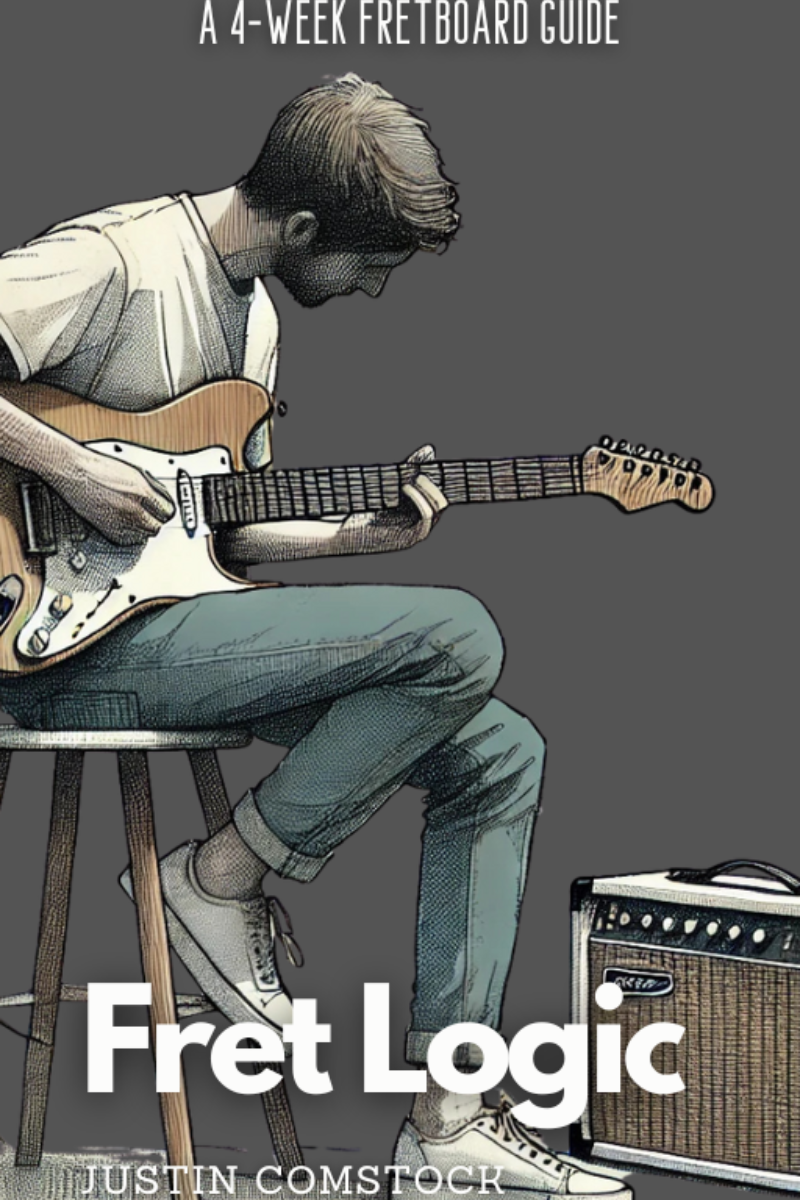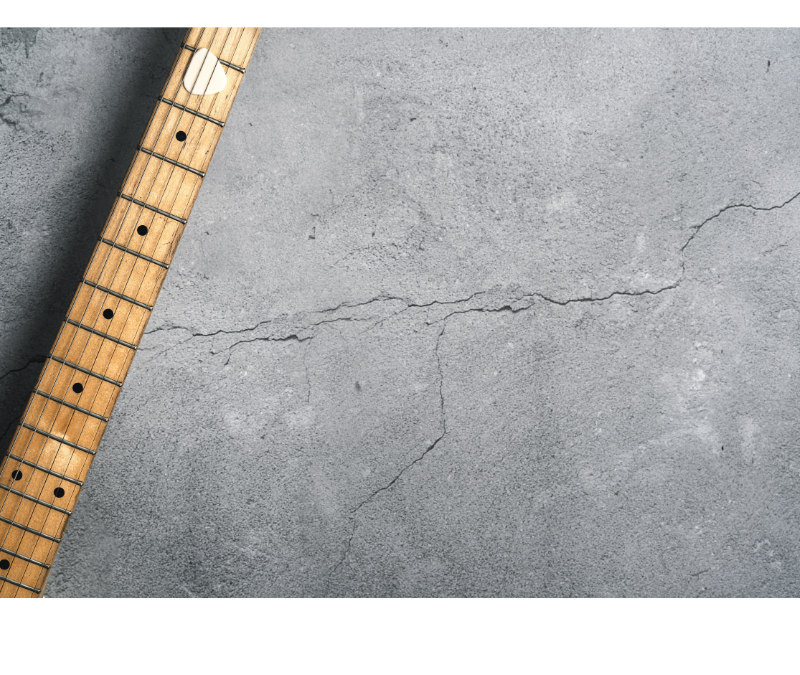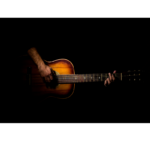Most guitar players think fretboard mastery is some far-off dream reserved for the elite. But here’s a truth I’ve learned after years of teaching and playing:
It’s not about memorizing all the notes.
It’s about connecting them.
If you’ve ever felt lost beyond the 5th fret or wondered why some players can solo in any key while you’re stuck with the same tired box pattern, this post is for you.
Let’s take a more soulful, more playful approach to learning string notes on guitar—one that actually sticks.
And hey—if you want to turn your practice sessions into a daily groove, check out my Kickstarter campaign for FretDeck, the card-based system that gamifies fretboard learning. More on that later.
Why Knowing the String Notes on Guitar Changes Everything
Think of the fretboard as your map. The better you know the territory, the more freely you can travel it.
When you know your string notes:
- You’re no longer stuck in one key.
- You can transpose on the fly.
- You hear something and immediately see where it lives on your guitar.
- You stop relying on shapes and start playing music.
So how do we get there?
Let’s ditch the dry diagrams and dive into 9 creative ways to learn string notes on guitar—the way real players do.

❌ Stop Guessing. Start Shredding.
If you’re still fumbling through scale patterns and box shapes… it’s costing you progress.
FretDeck™ is the no-fluff system that shows you exactly how to master the fretboard—fast. Early access.
⚡️ This isn’t for dabblers. It’s for players who want results.
👉 Click here to join the pre-launch now
Early access. Limited rewards. Don’t wait.
1. Start with Octaves (Your First GPS Signal)
If you know one A note, you can find a dozen. Octaves are your secret decoder ring for string notes on guitar.
🎯 Try this:
Play the 5th fret on the low E string (A). Now hit the 7th fret on the D string. That’s an A too. Slide those shapes around and you’ll start to notice a pattern. Every note has echoes.
🧠 Pro Tip:
Drill the octave jump as part of your warmup. Pick a note—say G—and find it in three octaves.
🃏 Want a shortcut? My FretDeck has cards just for octaves and note mapping.
2. Visualize the Fretboard as a City Grid
Ever walked around a new neighborhood and felt disoriented? But by Day 3, you’re navigating like a local.
That’s what this is.
🗺️ Break the fretboard into zones:
- Frets 1–5
- Frets 5–9
- Frets 9–12
- And beyond…
Focus on one “zone” a day and learn every note within it. Use the E and A strings as anchors.
📌 Pro Tip: Use colored stickers or a dry-erase fretboard diagram. This makes it visual. Tangible.
3. Use Mnemonics (Yeah, Even the Cheesy Ones)
Remember “Eddie Ate Dynamite, Good Bye Eddie”? It’s old school—but it works.
🎤 Make your own. Get weird with it:
- “Every Angry Dog Growls Before Eating.”
- “Elvis Always Danced Gracefully Before Exiting.”
The sillier it is, the more you’ll remember it.
🧠 Internalize the open string names first. Everything else builds on that.
4. Quiz Yourself Like a Pro
Turn your fretboard into a flashcard game. Seriously.
💡 Here’s how:
- Write each note name on a card.
- Shuffle and draw.
- Find that note on all 6 strings.
⏱️ Set a timer. Challenge your speed.
Or better yet—grab the FretDeck and flip through cards with built-in prompts, drills, and visual scale shapes.
🧨 CTA: Tired of second-guessing notes? FretDeck is your at-home guitar dojo. Join the Kickstarter before we run out of early-bird spots.
5. Learn Songs in Different Keys
This is where theory meets soul.
🎸 Pick a simple song—something like “Knockin’ on Heaven’s Door.”
Now play it in G. Then A. Then E. Watch how the fretboard starts to light up.
The more songs you transpose, the more the notes become yours.
🎶 Bonus: Learn a solo note-for-note, and speak its language back to your fretboard.
6. The CAGED System (Without the Boring Lecture)
CAGED is just five chords—C, A, G, E, and D—that repeat all the way up the neck.
Once you know the root of each shape, the whole fretboard becomes a playground.
🎯 Try this:
Pick a note—say “C”—and find it using all five CAGED shapes. Strum each one. Let your hands and eyes build the map.
🎁 There’s a CAGED mini-deck inside the FretDeck. It’s not magic. But it’s close.
7. Use Songs as Practice Prompts
Remember: Music > exercises.
Pull up a song you love. Look at the first few notes or chords. Ask:
- What are the notes?
- Where else can I play them?
- What scale are they in?
🎧 Learning “Little Wing”? That intro is a fretboard clinic in disguise.
8. Visualization String Notes on Guitar
True story: B.B. King used to fall asleep visualizing his licks.
You can do the same.
🧘♂️ Close your eyes. Picture the fretboard. Picture playing a C chord. Then a C scale. Then soloing with C notes up and down the neck.
The brain doesn’t know the difference between imagining and doing. Visualization wires your fingers even when they’re not moving.
📌 Set a 5-minute “mental practice” alarm. Daily.
9. Join the Guitar Freaks Hangout (Yes, You’re Invited)
Learning guitar is better together.
Inside our Discord channel, players just like you are:
- Posting their fretboard challenges
- Sharing solo clips
- Doing weekly FretDeck prompts
- Asking, “What key is this in?” and finally getting it
🫶 You don’t have to figure this out alone.
👉 Join Guitar Freaks Hangout – it’s free, it’s fun, and it’s filled with fretboard nerds like us.

Join Guitar Freaks Hangout on Discord! 🎸
Get Fret Logic FREE!
Join the Guitar Freaks Hangout Discord and get exclusive access to my entire e-book, Fret Logic! Master the fretboard and elevate your solos with this comprehensive guide.
👉 Don’t miss out—join now and download your free copy!
Final Thoughts: You Don’t Have to Memorize It All—Just Connect It
Fretboard mastery isn’t about rote memorization.
It’s about relationships—how notes connect, how octaves stack, how chords form, how music lives on six strings.
The good news?
🎯 You already have what you need.
You just need better prompts, visual anchors, and a creative system.
🎁 Next Step: Grab Your FretDeck
We’re live on Kickstarter right now. This is your chance to:
- Practice fretboard notes without guessing
- Train with scale + chord modes in every key
- Have fun while learning with a deck that fits in your case
⏳ Back it now and get bonus PDFs + Discord access.
Don’t wait. The early-bird rewards go fast.

❌ Stop Guessing. Start Shredding.
If you’re still fumbling through scale patterns and box shapes… it’s costing you progress.
FretDeck™ is the no-fluff system that shows you exactly how to master the fretboard—fast. Early access.
⚡️ This isn’t for dabblers. It’s for players who want results.
👉 Click here to join the pre-launch now
Early access. Limited rewards. Don’t wait.
🔁 Internal Resource:
Read next: How to Master Pentatonic Scale Shapes in Every Key
🔗 Outbound Resource:
An interactive game designed to help you memorize the notes on the fretboard through engaging exercises. It offers customizable settings, including various tunings and fret ranges, to suit your practice needs.










